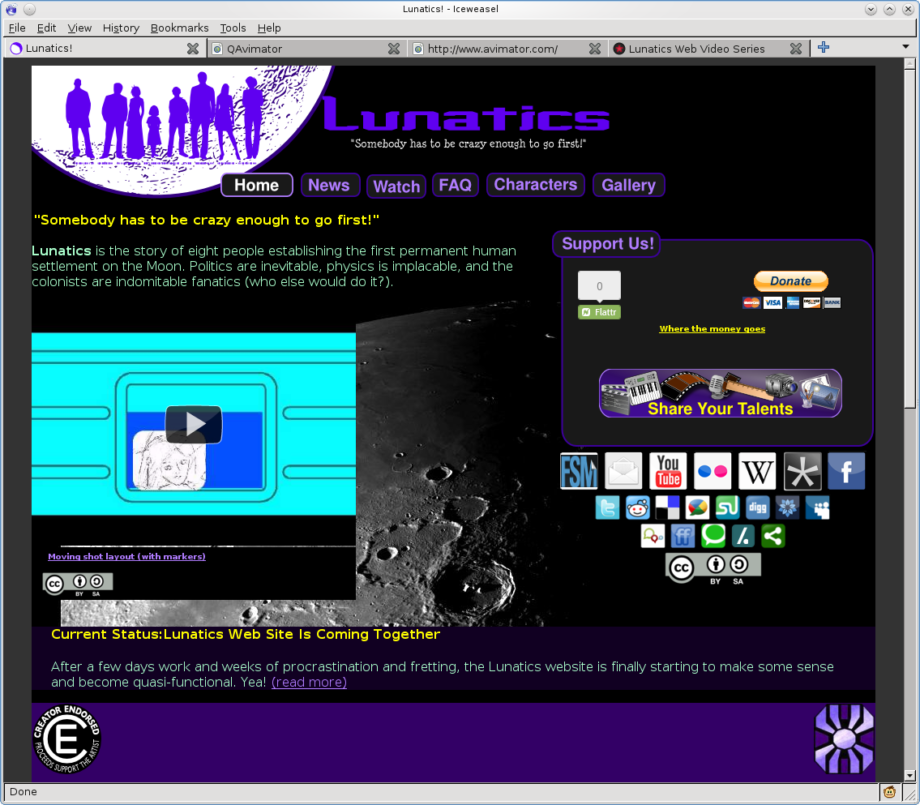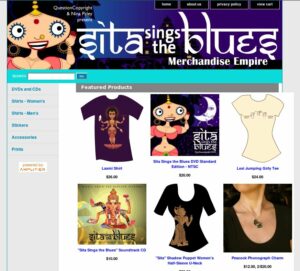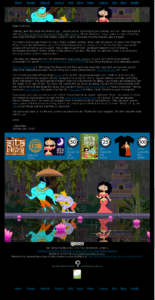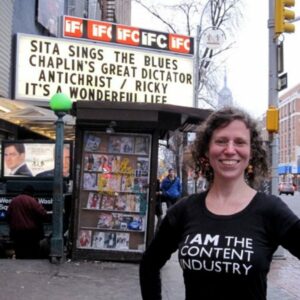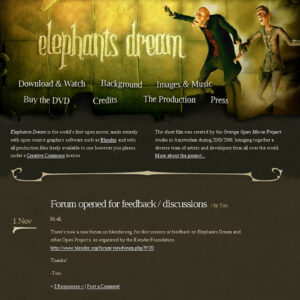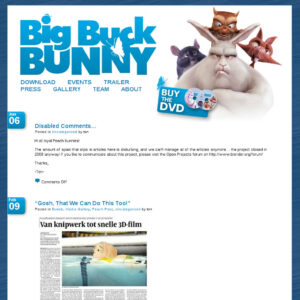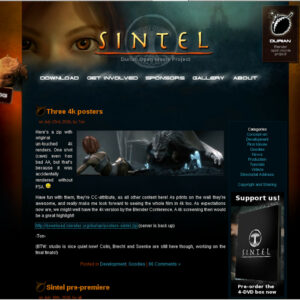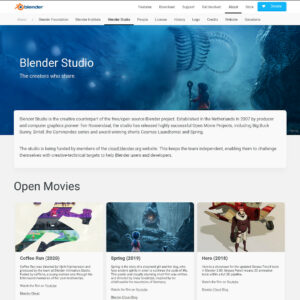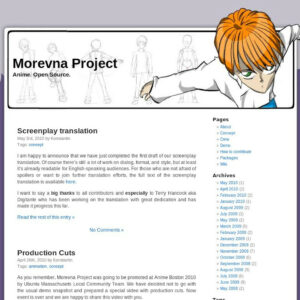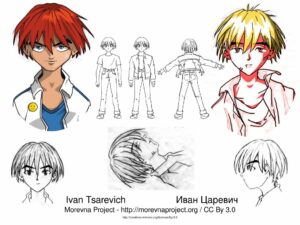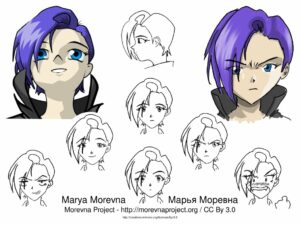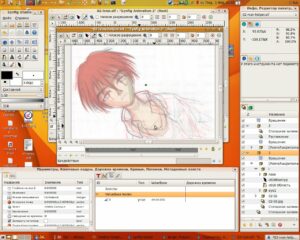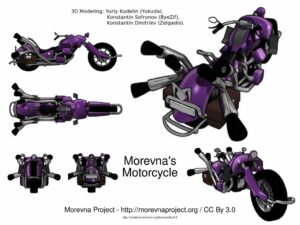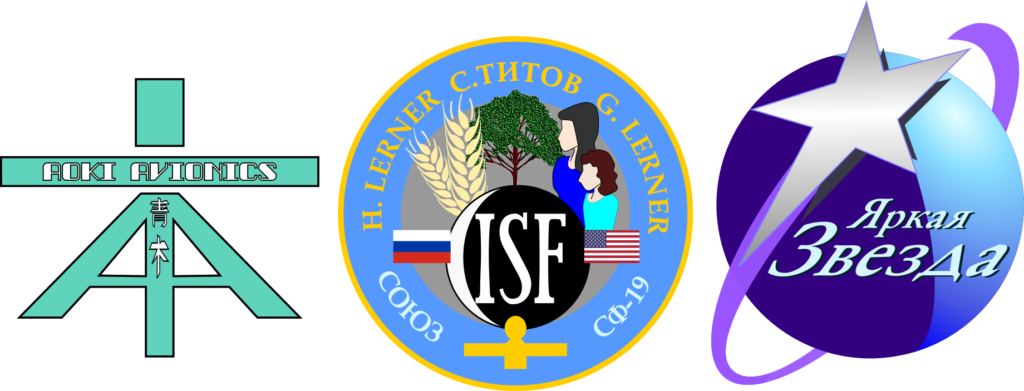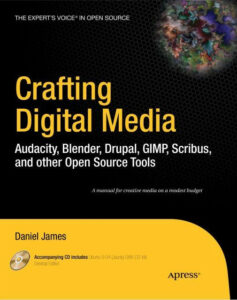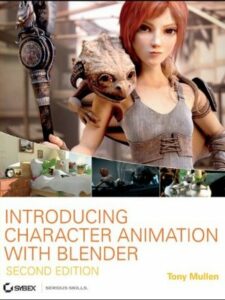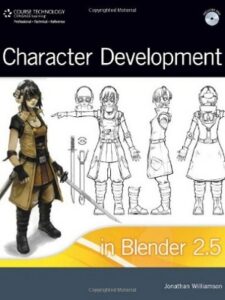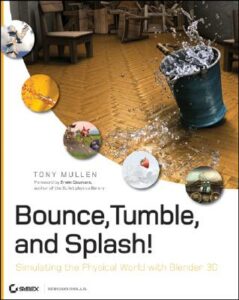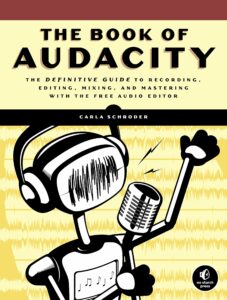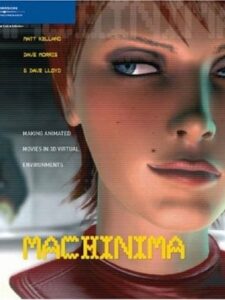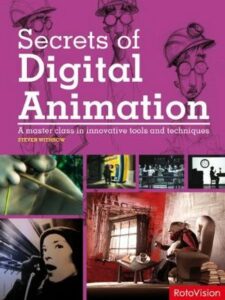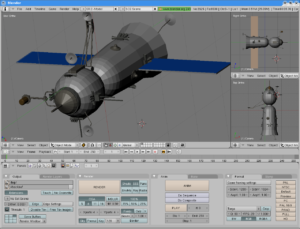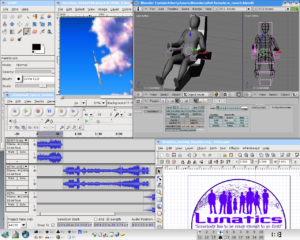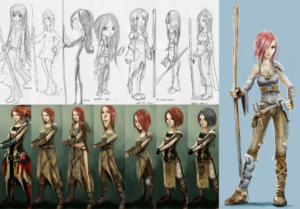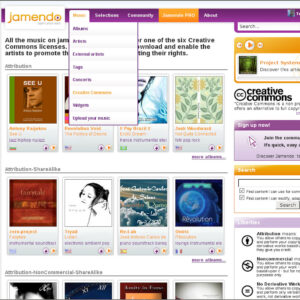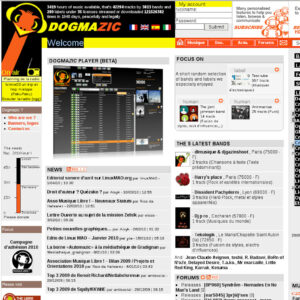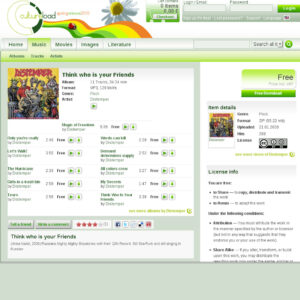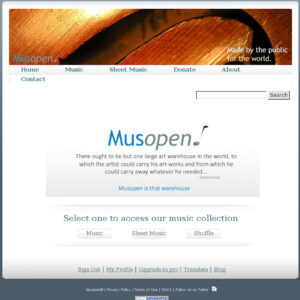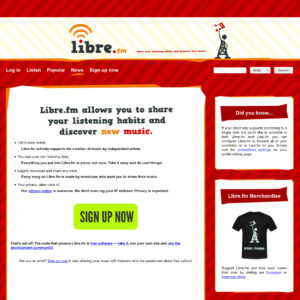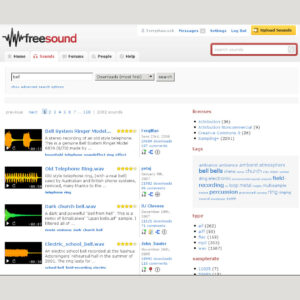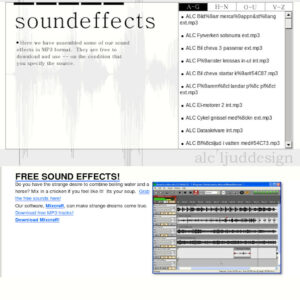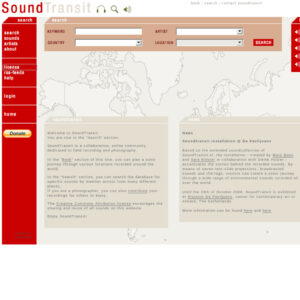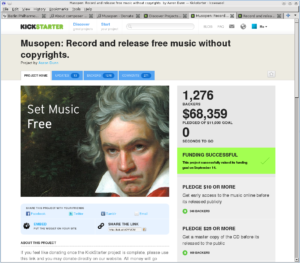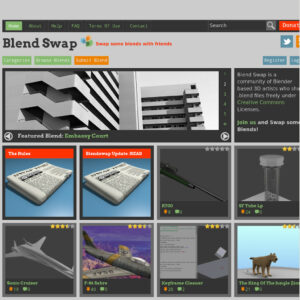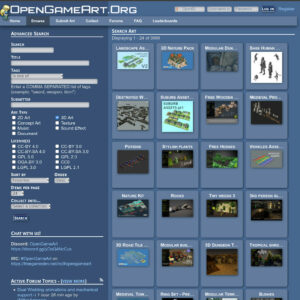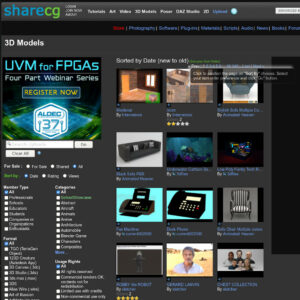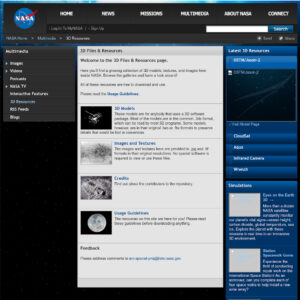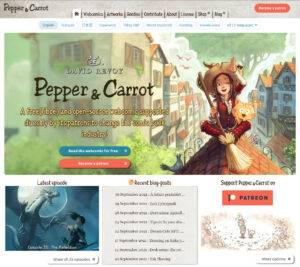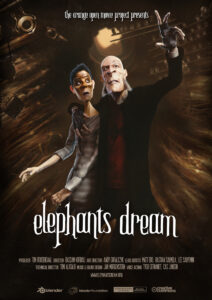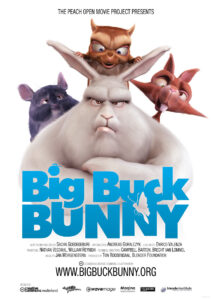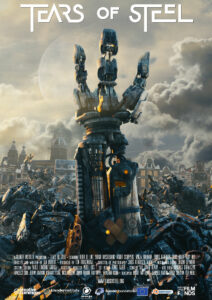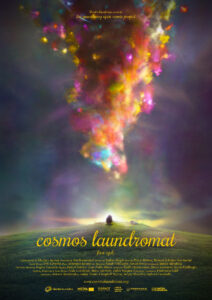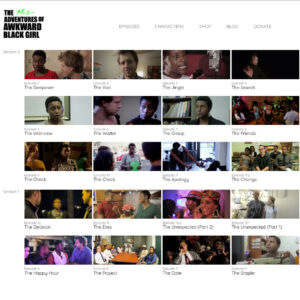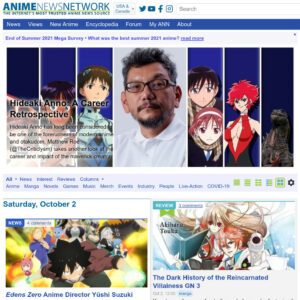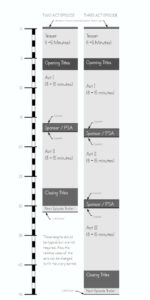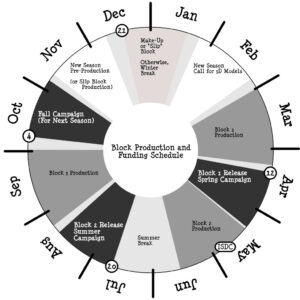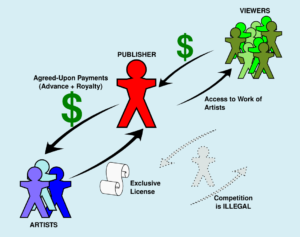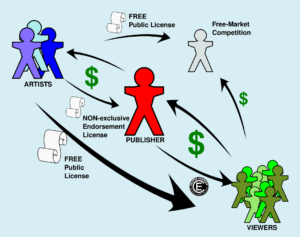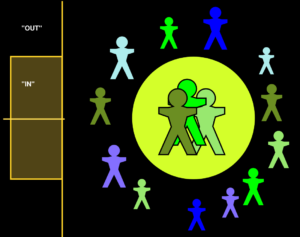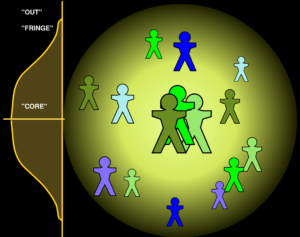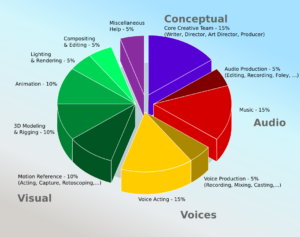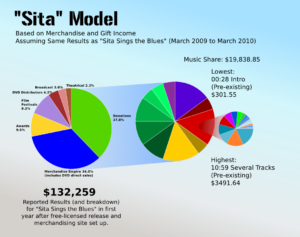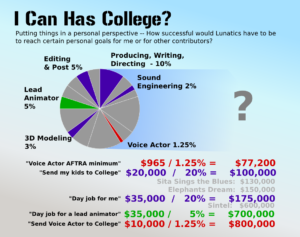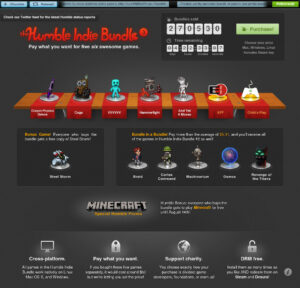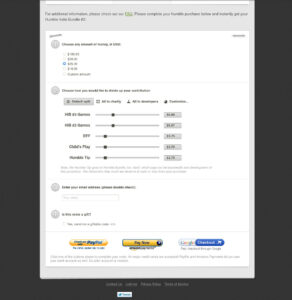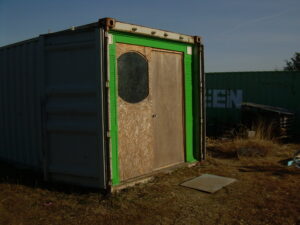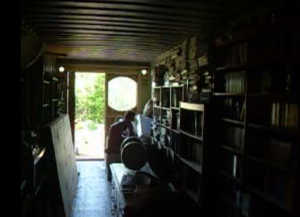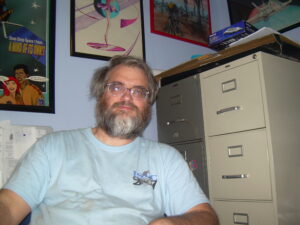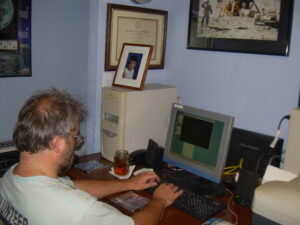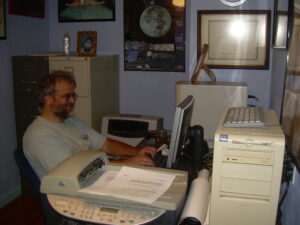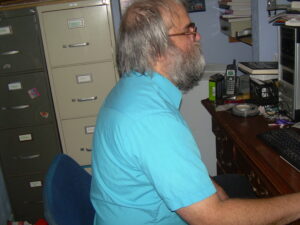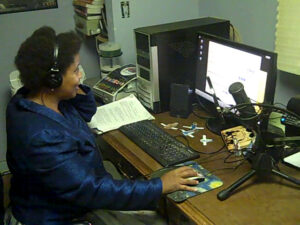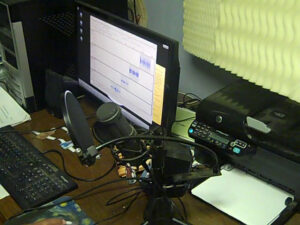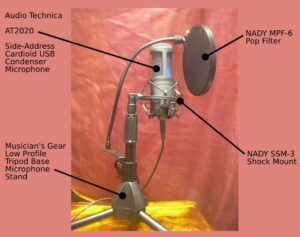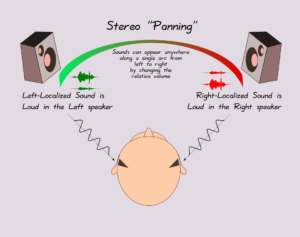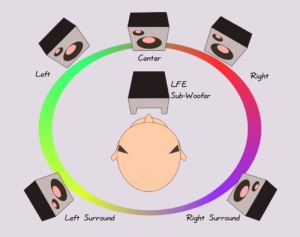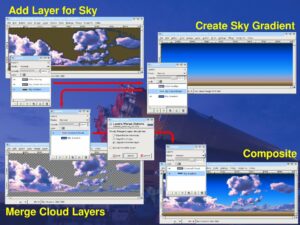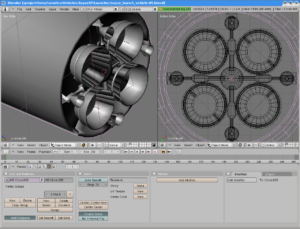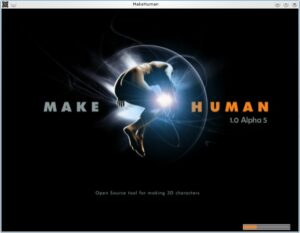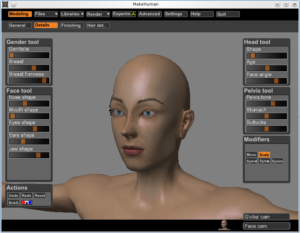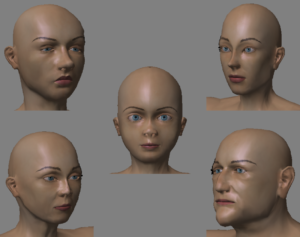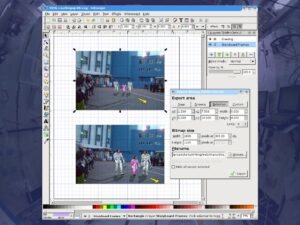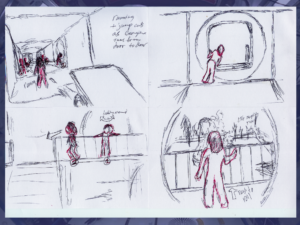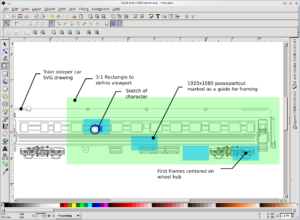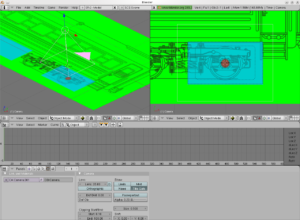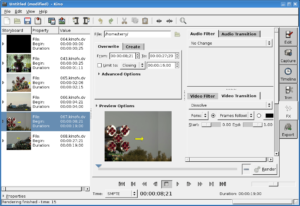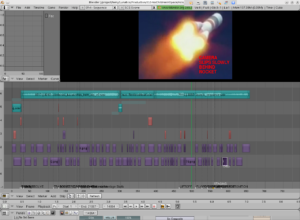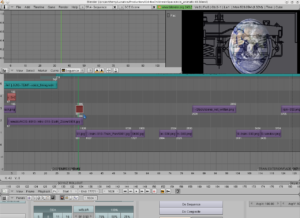It has been more than ten years since our project launch on Kickstarter, which is probably as good a date as any to call the “beginning” of the “Lunatics!” Project, although its origins actually reach back in various ways as far as 2000 (the germ of the story) or 2009 (the idea that we might actually be able to produce it as an open movie) or 2010, when I posted the first essays into the project in my Free Software Magazine column.
This seems like a very good time to reflect on what we hoped to achieve with this project, what we have achieved so far, what went wrong, what went right, and what we hope to achieve in the future.
This is part 2, about the vision and goals of the project, back in 2010-2011.
Do You Have to be Crazy?
(…or does it just help?)
Even at the outset, I knew this project was very complicated, with many unknowns we’d need to find out, so I didn’t feel that it had to succeed in every single detail, but rather that there were goals of different importance.
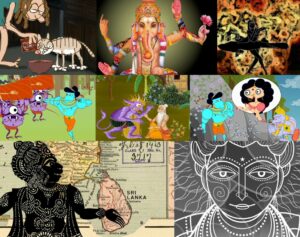
“Sita Sings the Blues” started as a lot of small animation projects by Nina Paley, which she collected into a single narrative, with multiple styles of animation. Although she got help with voices and music, it was essentially all her own work, which is a pattern I’ve noticed with most free-culture works: people take a risk on it individually, but rarely in groups, and rarely with investor support.
The accepted conventional wisdom in the film industry was that production companies, producers, production management, and so on — and the proprietary business model to keep them funded — was essential to large scale projects, like most successful movies and television. Was that strictly true? Or just a myth to protect the industry status quo? It sounded a lot like similar myths that had fueled the status quo of the proprietary software industry before open source started undercutting it. But so far, I had noticed that most projects that had succeeded, including Sita Sings the Blues, despite it being a feature film, were driven almost entirely by one person’s effort.
I hoped to address this question: could open, free-culture models support production on a scale beyond one crazy motivated individual?
So I decided to set the scale of the project to be “a little too big for one person to do on their own“.
The original question raised by my observations could be stated like this:
Can we close the circle between free-culture-compatible funding models, where fans pay money to creators voluntarily, by raising sufficient funds to pay for the reduced costs inherent in free-culture and free-software based production?
Why did I imagine this was possible?
2010 FSM Article: Making Movies with Free Software (or Archive)
A few months ago, I learned about two things which really changed my priorities. One was Nina Paley’s Sita Sings the Blues — an animated film which I’ve already written about extensively. Sita demonstrated something I had very little confidence of before: that artistic, aesthetic works could make money via a free release strategy. I already believed they could be made, and that one could find ways to fund it, but I have to admit, I was genuinely surprised to see Sita Sings the Blues making real money after release.
[…]
The second major influence was Morevna Project.
[…]
Its progress is, at least in part, due to the large array of useful tools for art, animation, film production, and online collaboration that are now available as free software. Seeing this project work, and becoming a part of it […] has given me both inspiration and practical information about tools and techniques.
Free Culture Funding
Sita Sings the Blues showed me that even a work under a Creative Commons Attribution-ShareAlike license could be “sold” successfully on a commercial basis, even after it had been produced. (I had previously imagined that once you released under a free-license, you pretty much gave up on any kind of “sales” income).
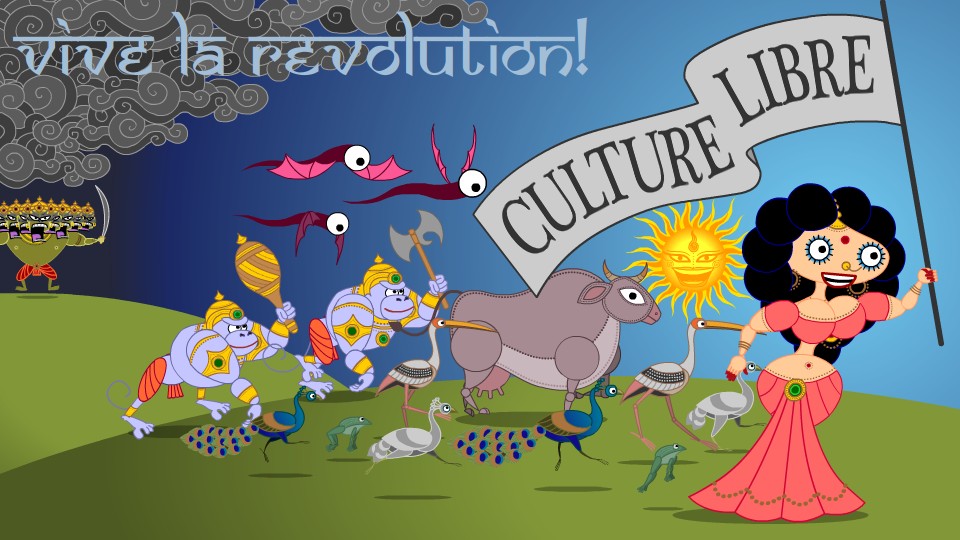
Nina Paley had raised tens of thousands through various festival prizes, fees for showings, purchases of “creator endorsed” merchandise, and so on. It looked very much like she’d make around $100,000 to $150,000 from the project, given a little time.
2010 FSM Article: Interview: Nina Paley (or Archive)
In lieu of today’s regular column, I’ve decided to present an edited transcript of a very informative interview of Nina Paley by Thomas Gideon of “The Commandline Podcast.” Paley has been doing a lot of interviews since her free-licensed release of “Sita Sings the Blues” and her subsequent work with QuestionCopyright.org […] But this interview is possibly the best — covering all of the major issues she’s been talking about in what I thought was a very insightful way. So: kudos to Nina Paley and to her interviewer, Thomas Gideon, and I hope you find this text version interesting.
With the help of Karl Fogel and Question Copyright, Nina Paley made a free-culture-compatible business model work for “Sita Sings the Blues”, based mainly on their “Creator Endorsed” idea, which of course, we’ve adopted.
That was interesting, because it was getting close to the range of reported budgets for the Blender Open Movies, such as Elephants Dream (€120,000), though considerably less than what Sintel cost (€400,000 ($550,000)).
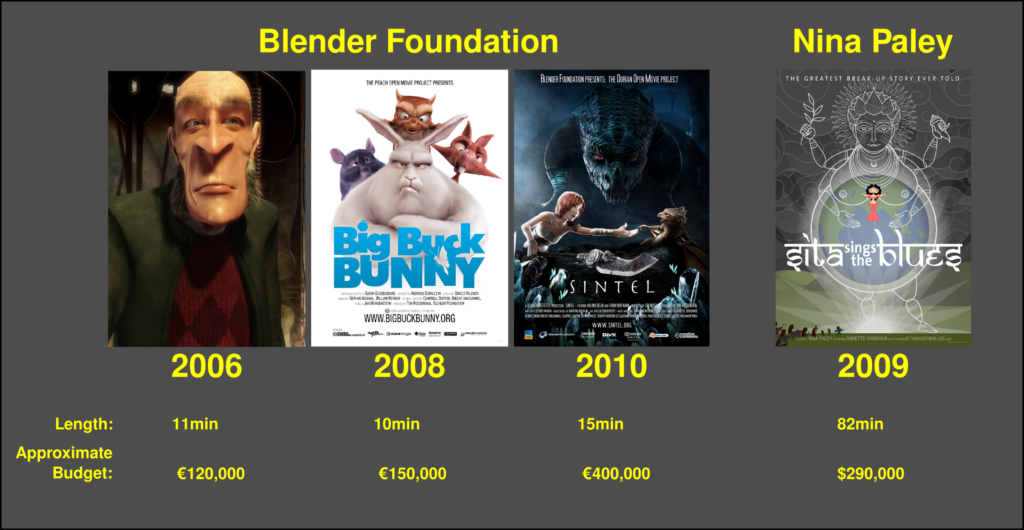
2010 FSM Article: Sintel DVDs have shipped with film, commentaries, and Blender tutorials (or Archive)
My DVD set for the Blender Foundation’s latest open movie, “Sintel,” arrived this month. Considering the size, expense, and duration of the production, it’s a truly amazing short film. There’s much more emotional weight here than in “Elephants Dream” or “Big Buck Bunny.” More of interest here, though, is the huge amount of supplementary material included in the set. This is more than just the sources for the movie. There’s also a lot of tutorial information for Blender users and of course, an array of personal commentaries on the production process.
Was it possible for a free-culture compatible business model, such as Sita used to fund the budget of a project like the Blender Open Movies? Could one sustainably and profitably make movies this way, in defiance of the Hollywood conventional wisdom that success in film relied heavily on copyright restrictions? This speculation permeates the free-culture advocacy community, but how realistic was it, really?
The other common funding model for free-culture films is for them to be associated with an institution with a different primary goal: software development, in the case of Blender; or education, in the case of Morevna Project and Tube Project. The Blender films were supported largely by users of Blender who wanted to benefit from the development projects associated with the films. With Blender Studio and Blender Cloud, Blender has moved to an on-going service model, with the films functioning as both a spur to development and tutorials and as marketing. Bassam Kurdali, who directed “Elephants Dream” and then went on to found the Tube Project, did much of this work in association with his position at Hampshire College, where he taught animation. Konstantin Dmitriev’s main income is also from teaching, at the primary and secondary level.
Free Software Production
Morevna Project showed me that a project also didn’t have to be as expensive to produce as 3D projects usually are. There are a wide range of animation options, and higher “production values” aren’t always what’s important. Both Morevna and Sita relied on 2D animation. And of course, I knew from the whole industry of Japanese anime that keeping the budget small meant being able to survive on a niche audience.
Konstantin Dmitriev’s “Morevna Project” had set out to create an anime-style cyberpunk retelling of a Russian folk tale, using primarily 2D production techniques, which could be cheaper than trying to work in 3D, and has so far been fairly successful, although, like “Lunatics!”, the “Morevna” project has gone through a lot of evolution in development. We still communicate a lot, and help each other out when we can in 2021 (I’ve done English-version editing and voice-over work for them, and we make extensive use of their software development work).
Regardless of whether I used 2D or 3D animation, though, I knew that using open source software and working on my own computer would make the production cheaper. I wasn’t sure exactly how cheap, but I began to think in terms of “can I tell the story I want to tell on the amount of money I’d be able to raise through a free-culture business model?”
2009 FSM Article: Inkscape: one essential vector graphics application (or Archive)
Inkscape is my vector graphics application of choice. It can do a wide variety of vector drawing tasks with relatively little effort. It uses the now-standard SVG vector format as its native format, and it has become very extensible through a simple “stream-based”, language-agnostic scripting system.
Inkscape is the software I use so much that I forget to mention that I’m using it. In “Lunatics!” it has been essential for logo graphics, branding, decals, and many other production assets. It’s also my go-to tool for creating diagrams I use during the production process and presentation graphics. I had already been making most of my Free Software Magazine illustrations using it for years when I wrote this review (which was part of a project to recreate the same CUPS printer diagram with several different vector graphics applications).
My writing gig at Free Software Magazine consisted mainly of finding new free software, learning how to use it, and reviewing it. I also reviewed technical books on using free software. I didn’t get paid much in actual money in that job, but tech books can be pretty expensive, and my usual payment for writing a review was getting a free review copy of the book. I collected a lot of technical books, especially for Blender, in this way. Sure, some of them were kind of terrible or didn’t really apply to what I was doing, but most were good and useful.
This meant that my initial exploration of free software film-making tools fit right into my existing writing job, so it was easy to make a soft start by simply focusing on the related topics. These also tended to be pretty popular with readers, so there was no problem with justifying my choices.
My writing gig at Free Software Magazine didn’t pay that much actual cash, but I did often get free technical books to review, and I naturally focused on open-source multimedia applications like Blender, Audacity, and Inkscape. Of course, I did have to pay for a few — I picked up “Secrets of Digital Animation” in a Half Price Books, surprised to find “Big Buck Bunny” on the cover (and “Sita Sings the Blues” inside, as well). Machinima appealed to me as one of the cheapest ways to make a 3D animated movie, although I would still need original assets for my own production.
That also meant that there would be a technology challenge of managing a larger project with lots of assets. That might be a draw for those interested in open movie projects primarily for the technology aspects.
Free Culture Resources
From my experience with Light Princess, I had already discovered large troves of music, sound effects, and other assets under CC Attribution or Attribution-ShareAlike terms, so finding music and sound to support the project would be easy, so long as I didn’t mind keeping to a CC By-SA license, which is what I intended, anyway.
I also had met and worked with character artists. I looked over the work, and decided the best match for doing character design for Lunatics was probably Daniel Fu — and luckily, I was able to find him again (unfortunately, I had no such luck finding the others, so even if I’d wanted to get them, I couldn’t).
I did look around for some other artists, in case he wouldn’t take the job, but Daniel was my first pick, and I had talked to him about an earlier project I’d considered, tentatively called Rocket Science 101, which was going to use manga-style art to communicate basic science concepts. He’d considered it too large a project, but for Lunatics!, I knew we’d only need character design, which was a less intensive job (in fact, that would’ve been an option for RS101, too, but I hadn’t considered it at the time).
2010 FSM Article: 7 Things We Don’t Have to Invent for Animation Production (or Archive)
One of the best things about free-licenses is that they unfetter the natural chain of knowledge — the path that links each new innovation to the next, pulling us up to greater heights without have to re-invent what has already been done in order to do something new. You get to the fun part a lot faster this way.
Soundtrack & Finding Music
One of the earliest things I did was to find music. I am not a composer, musician, nor musically-trained. At best, I “know what I like” in music. On the other hand, I love to listen to music when I’m thinking about how a scene should be put together, and it is often easier to cut a scene to existing music than to try to make existing music match the scene (though of course, the latter is what film composers usually do).
It has also been a longtime practice in film and animation, to cut a scene together with a “temporary soundtrack” or “temp track” when working on it, before a final score is created. The iconic soundtrack for Stanley Kubrick’s 2001 is curious in this respect: it is actually the temporary track, because Kubrick was disappointed with the original score by Alex North that was commissioned for the movie, so the studio actually got the rights to use all the original music in the temporary soundtrack, which has become the icon music we all remember from the movie.
Most recently, of course, I knew that most of the animation I had seen in “Sita Sings the Blues” was created this way — essentially they were animated music videos for Annette Hanshaw music from the 20s.
But of course, I listened to modern commercial music, much of the time, and it was very unlikely I would get rights to any of it. Nor was I likely to have the budget to commission a new score.
2010 FSM Article: Finding Free Music for a Free Film with Jamendo, VLC, and K3B (or Archive)
The first thing that you must do, if you want to use free-licensed music is to listen to it.“Why,” you must ask yourself, “do you want to use proprietary music?”
Is it really better? Is it really of so-superior a quality than the free music? Or is it simply more familiar? And if so, why is it more familiar?
The truth is that your taste in music has been manipulated by media companies for years.
On the other hand, I knew that there was already a lot of free-licensed music out there: music now in the public domain or music released under licenses that would be compatible with the Creative Commons Attribution-ShareAlike license I wanted to put on my finished product. This included Creative Commons “Zero” public-domain dedicated work, Creative Commons Attribution-Only (more common than I initially expected), and Creative Commons Attribution-ShareAlike music (which of course, insisted I use CC By-SA myself — but I intended to anyway).
For technical legal reasons, it did not include music released under the “License Art Libre” / “Free Art License”, even though there was a broad consensus that it was essentially equivalent to CC By-SA. That was the state with CC By-SA 3.0, which was the current version in 2010, although much of the music I would find was actually under CC license versions 2.0 or 2.5.
Of course, I could not use CC By-NC, By-ND, By-NC-SA, or By-NC-ND music, as none of those could be used in a By or By-SA work.
Some of the free-licensed audio content sources I drew on for “Lunatics!”: Jamendo, Cultureload, and Dogmazic consisted mostly of electronica and Western pop/rock music. Musopen focuses on orchestral and classical music performances . Wacca.fm was a Japanese music-sharing site. Libre.fm is more of an aggregator than a direct upload site, but it often kept tracks that had been removed from other sites. FreeSound is the place to go for sound effects recordings, and Sound Transit was a project to collect ambient sound recordings from all over the world, all under a CC By license. I also found a number of small sample collections under free CC licenses from commercial sites selling software or larger proprietary collections.
The Jamendo collection has definite biases in the kind of music you can find there: it’s strongly weighted towards electronica, “New Age”, dance music, pop, and rock generally. Almost all Western and modern. Not much classical, and most that there is is just piano, with very few orchestral pieces.
So I looked to other sites to find other types of music. MusOpen had a large collection of public domain performances of classical music pieces.
2010 FSM Article: MusOpen.org: Public domain performances of public domain music (or Archive)
You might think that, for a free-licensed film, using classical music is both obvious and easy. But unfortunately, this isn’t all that true. It’s true that classical music compositions are almost all in the public domain. However, in order to use them legally in a film, you need a license on the particular recording of that music that you want to use.
2012 FSM Article: MusOpen.org is Commissioning the Prague Symphony Orchestra this January (or Archive)
In September, 2010, the free culture organization raised over $68,000 (several times their $11,000 goal) through a Kickstarter campaign, with the intent of commissioning a “internationally renowned orchestra” to perform the Beethoven, Brahms, Sibelius, and Tchaikovsky symphonies.
Anime was a strong influence on “Lunatics!” and through anime, J-Pop music generally, which is not well-represented on Jamendo. For that, I sought Japanese sources, which was an adventure, owing largely to the language barrier.
2010 FSM Article: My Quest for Free Licensed Japanese Pop Music with Wacca.Fm’s XMLRPC API and Python’s xmlrpclib (or Archive)
It all started when I was looking for character theme music on Jamendo for Lunatics. One of the characters is Japanese, and while she probably doesn’t listen to J-Pop or Enka much herself (she’s more of a classical piano type), we felt there might be some times when the cultural reference would be appropriate.
[Possibly I should mention that Hiromi changed from being originally Japanese to being a Japanese-American who had spent some time in Japan in the writing process. I was using an earlier character bio when I wrote the above in 2010].
I hit paydirt with a music-sharing site called wacca.fm, although sadly it has gone the way of all things, now, as did Dogmazic, one of the sites I discovered when I was working on “The Light Princess”.
Libre.fm is really more of an aggregator than a music-sharing site, although it was very useful for tracking down music which had disappeared from Jamendo or some other site.
2012 FSM Article: Libre.fm: A music sharing site just for free-culture works (or Archive)
You’ve probably heard of “Last FM”, a music playlist site that allows users to track their favorite bands and listen to music streamed over their mobile devices. But you may not have heard of Libre FM, a recent free software project and free culture web application intended to serve this purpose exclusively for free-licensed musical works.
I did find other collections. A company, Pandora Records, that specialized in classical recordings folded, and made their entire catalog available under a By-SA license, for example. Some individual artists posted content on their own websites under suitable licenses, and so on.
And despite my misgivings about the prospects, I did arrange with a few individual artists to be able to release their music tracks under By-SA as part of “Lunatics!”
Sound Effects
It’s hard to fake sound effects. Most of the effects in movies like Star Wars and Star Trek are actually recordings of real things, although they were often heavily remixed and altered.
There are large collections of “royalty free” sound effects that one could make use of, but “royalty free” sound effects aren’t technically compatible with a CC By-SA license, as they typically call for restrictions on aggregation.
This is where FreeSound.org becomes really handy.
2012 FSM Article: Creative Commons and FreeSound.org Phase Out Sampling Licenses, Choose More Freedom (or Archive)
At first, I was a little annoyed by the necessity of signing up to the site in order to download the full-resolution sound files, but it turns out that this allows something really cool which the site does: it tracks your downloads, and takes care of the Attribution requirement for you. This is totally cool. Keeping track of correct attributions for passively collaborative contributions is one of the less fun parts of reusing the commons, and for sound effects, the requirement can be pretty burdensome — a film might use hundreds of sound effects, and keeping track of proper attribution for them all could be a very complex chore. By keeping a record of what sounds you’ve downloaded, and tracking the correct attribution for each, this new FreeSound.org interface feature is extremely helpful.
2010 FSM article: Extracting and Using a Recorded Sound Effect with VLC and Audacity (or Archive)
I found a useful sound effect in an online video from NASA which replaces an earlier temporary sound I used in a scene soundtrack for the Lunatics pilot, “No Children in Space.” I’m going to extract the sound from the video (with VLC), cut out the sound I need, clean it up, and insert it into an existing sound mix (all with Audacity). This should give you some insight into using Audacity and a VLC on a real project.
3D Assets
Although the expectation was that we would produce most of our own 3D assets for this project, there are a number of 3D model sharing sites which include models under CC By-SA compatible licenses. By far, the most useful has been BlendSwap, which is explicitly for Blender models, and at least at the beginning, was almost entirely free-licensed content.
Some of the 3D asset sharing sites that were available in 2010. Of these, BlendSwap, OpenGameArt, and ShareCG are still around in 2021.
2011 FSM Article: 36 Free 3D Model Sites Compatible with Free Blender Animation Projects (or Archive)
Recently, I read a list of “60 Excellent Free 3D Model Websites”. Like most lists of this type, it turns out that the word “free” doesn’t really mean “free” for most of the content. So some fact-checking was in order.
2012 FSM Article: Four sources for Free-Licensed 3D Modeling Textures (or Archive)
This week I discovered some new resources for texture graphics to use in 3D modeling. Textures are essential for most 3D modeling projects of any complexity, and good textures can sometimes make very simple “low-poly” models look much better.
2009 FSM Article: Free-licensed art for free software games: OpenGameArt.org (or Archive)
Today I happened upon a site I really, really wish had been there in 2000 when I started my own game project. Free software games often suffer from poorly-executing graphics, simply because it’s a real challenge coordinating both the artistic and software needs of a project. Few developers are good at both, and so it makes sense to accumulate commonly-needed elements in one place.
Series Format
Web comics, even free-licensed ones, like David Revoy’s Pepper & Carrot, had been a pretty well-established cottage industry for at least a decade by 2010. A key thing about these was that they were series projects: when people paid for them, they weren’t just paying for what the creator had already done, but also in anticipation of what they would do in the future. Previous work serves to advertise the potential for future work. They were also, of course, single-author works, getting back to my earlier observation.
Pepper & Carrot is probably the most impressive free-culture artistic business success stories. David Revoy makes a modest living off of Patreon subscribers alone, today, as well as publishing the comic in paper form. He’s also done an impressive amount of development work, primarily to handle translations (as you can see, the comic is available in 57 languages in 2021). The entire thing is under CC By 3.0 license.
The Blender Open Movie projects could also be thought of as a “series”. It was easier to raise funds for Big Buck Bunny, because Elephants Dream had worked, and likewise to fund Sintel. In 2010, there was a definite trend upwards in the budgets for the Blender Open Movies, although their budgets actually leveled off after that, with Tears of Steel and Cosmos Laundromat having budgets similar to Sintel, and since then, productions have generally scaled down and moved to Blender Cloud.
Collectively, the Blender Open Movie Projects can be seen as a series, with each promoting the fundraising for the next. So that was a key thing I took to heart: set the project up as a series, not a one-off work.
Since I was viewing the project explicitly as a series, I then researched what was going on with web series, outside of my Free Culture bubble. I had first been introduced to “Dr. Horrible’s Sing-Along Blog”, which had been produced by Joss Whedon (I was already a fan of “Buffy: The Vampire Slayer” by then), and it was through a commentary on the DVD that I first learned about Felicia Day’s “The Guild”, which I really connected with. I found it incredibly inspiring to see what they’d produced on such a tiny budget. The first season was entirely funded through self-hosted crowdfunding, although by the time I had discovered the series in 2009, they were on season 3 and had commercial funding from Microsoft. In 2011, just about when I was working earnestly on setting up “Lunatics!” as a project, Issa Rae’s “Awkward Black Girl” had just debuted, which was also a big influence on my ideas for a project launch and on presenting the series online.
Outside of the Free Culture bubble, web series were also an established presence. Felicia Day’s “The Guild” and Issa Rae’s “Awkward Black Girl” were both influences on my production and web design, as was the entire genre of Japanese anime.
Of course, the format for “Lunatics!” was really inspired by Japanese anime, though with aspects of typical American science fiction TV series (notably the teaser), which were typically 45-minutes long in 2009. A typical “half-hour” anime episode is normally about 20 minutes of action, with the remainder taken up by titles, trailers, and commercials. The length was imagined as a compromise between the two, but also much more variable, since the web format didn’t impose a strict duration:
From the prospectus part of our “Artbook & Writer’s Guide”: the original concept for the episode structure and annual fundraising/release cycle we wanted to establish.
The idea then was that we’d try to organize our production and scale it such that we could produce a modest commercial run of episodes each year — originally we were shooting for 18. This seems wildly unrealistic now in 2021 as I finally eke out the first episode, but at the time, we were thinking of operating more like a commercial studio, with a much larger group of animators.
Since then, of course, it has become evident that attempting to produce episodes at this length is too difficult, and we’ve scaled back our expectations. But this is how we planned in 2011.
Another was: stay conservative about the production values, cheap is good!
A good story can be told with very simple effects — the audience is invited to fill in the details with their imagination. The best low-budget projects take advantage of this. Japanese anime in particular is known for inexpensive limited animation which keeps the budgets small. With small budgets comes much greater creative freedom, because a low-budget production can be much more easily supported by appealing a niche audience. Big budget productions pay a big price in creativity because they have to appeal to very broad audiences in order to rake in enough cash to pay for what they cost to make.
“Lunatics!” seems like pretty popular subject matter, but it was (and is) important to me not to dumb it down to appeal to a mass audience. That means making something a niche audience of space and free-culture geeks could fund.
For that to work, of course, you need a solid story. This was one thing the Blender Foundation projects lacked — they each brainstormed the story after getting their teams together, so the story was literally an afterthought. The only one of the Open Movie projects I would call a success on story terms was Sintel, while the others were essentially technology demonstrators with a little story mixed in to keep it going.
But I didn’t have to search far for a story, because we’d been sitting on that “Lunatics!” idea for a decade. We were about 90% of the way there, with characters, situation, and basic plot mapped out. We were ready to write.
There was another reason for going to a series project: it would emphasize long-term gains over short term gimmicks. Sometimes it’s a hard choice between just slogging through a problem or figuring out how to automate it. A series project means developing assets you plan to use for a long time, and it means you should automate everything you can.
“Artists Should Be Paid”
This is, as you would imagine, a very popular assertion among people who consider themselves artists. But who do we actually mean? And when and how and how much should artists be paid? Just as with Free/Open Source Software, there is frequent conflation of the notion that a free-license implies both non-commercial and non-paying work. But that’s exactly what a project like this is trying to challenge.
I did a lot of thinking about this at the beginning, not just out of a desire to be ethical with fellow artists (though that was certainly a factor), but also keeping in mind the PR and goodwill disaster that would ensue if we were “exposed” as somehow “dishonest” with or “exploitative” of artists — regardless of how we might feel about it ourselves. The best defense against such attacks is full and unambiguous disclosure of your plans, up front. That way, if anyone objects to the terms later, you’ve got it on record that you certainly weren’t trying to fool anyone.
2010 FSM Article: Artists should be paid, Part 1: Why Creator Endorsed sales promote fair sharing (or Archive)
I’ve been trying to zip together what I know about free online collaborative projects […] and commercial free culture projects […] It’s easy to get lost in the logistics of such a production. One of the questions I’m bound to be asked is “How do I know I’m going to get paid?” Artists have a strong fear against being “exploited”, though they’re often less clear on exactly what that means. A little bit of examination, though, shows this may be a strength of the “Creator Endorsed” free culture approach to marketing a work — it makes fair payment a matter of personal financial interest to the publisher, as I hope to explain here.
2010 FSM Article: Artists should be paid, Part 2: What’s “fair”? (or Archive)
One of the things that has bugged me from the outset is this business of remunerating collaborators from the earnings of the work. How do you decide, well in advance of production, just how much somebody should get out of any profits or revenue that are made? And how can you attract good professional talent if you put off that decision?
The problem with “just split it evenly” is that it implies all the contributors are contributing on an equal basis. But in reality, some people contribute a little and others a lot. So a so-called “equal” split really just means some “insiders” get all the remunerations and “outsiders” are left in the cold. A tapered split makes it easier to balance small “fringe” contributions (such as music used) against “core” contributions (such as animation or music composed for the show).
2010 FSM Article: Artists should be paid, Part 3: The Big Picture (or Archive)
Can artists actually make money on a free software driven free culture project? Having established the motivations and the basic principles in the first two parts, I’m going to look at the big picture here: how money would be distributed among major parts of the project (drawing partly on knowledge accumulated from the proprietary film and television industry — taking into account the differences), where the money would come from, and what sort of income might be realistic based on the few projects that have gone before us.
Projections should ideally give us an idea of what “success”, “failure”, and “moderate success” would look like in the given model. In this article, I wanted to get a kind of reality check on just how successful the project would have to be to actual compare with professional production.
Initially, I struggled with the notion of trying to figure out how to “budget” for a project with no fixed budget. And also how to rationalize the breakdown of expenses. Eventually it hit me, though: this an executive production decision. It’s not really any different to say “I will spend 10% of my budget on soundtrack” than it is to say “I will spend $1000 on soundtrack”. It’s just budgeting — artists who contribute will have the same freedom to decide if that’s adequate as on a fixed budget.
And since sales would follow the Creator Endorsed model, with nothing really forcing fans to pay for the work at all, the breakdown of the budget becomes a kind of “ethics” selling document: it is ultimately up to the fans themselves to decide if they think the budget is fair enough to fund it as presented.
In fact, the “Humble Bundle” had made this explicit by literally giving buyers sliders to decide how they thought their money should best be spent.
Humble Bundle gives direct control of the breakdown of sales into payments to contributing artists (albeit at a fairly coarse level). This is more than we can do, but it illustrates the point that the fans are the final arbiters on the ethics of payment breakdowns through their power to buy (or not).
New Office (2008-2013)
In 2008, I had built a new office for myself in the back of an ocean storage container. We used the front of it for our personal library, which included a lot of the books I referred to on my project.
It was far from perfect, but the office itself was excellent and a big upgrade from the workspaces I had been using before. It was a fantastic feeling! It had no windows, but it did have a portable air-conditioning unit, vented through special vents I cut in the side of the building.
My office workspace, more or less as it was when I launched the “Lunatics!” project (this shows the new office in 2008 and a couple of clips from 2012, with the computer and voice-over microphone). This was built into the back end of an ocean storage container we also used as a library. The front door to the building was really an interior door, but in bad weather, we could still shut the outer container doors.
This remains my office today in 2021, although I have had to make changes, as we’ll see in a later installment of this series.
Experimental Production (2010)
Initially, I started working on “Lunatics!” in a series of experiments, which I used as documentation and review fodder for my column at Free Software Magazine. These didn’t follow a very systematic pattern, but they allowed me to “get my feet wet” and allowed me to test and review various pieces of software to see if they would be useful.
2010 FSM Article: Painting Sound with ARSS and Gimp (or WBM Archive Copy)
I was very excited by the possibility of creating sound effects from scratch. In my project, I need a lot of sounds that I can’t easily find real-world recordings for, and while I sometimes have a good idea of what it should sound like, I can’t always find a way to create that sound.
In this article, I explored a software package which was designed to reverse an audio spectrum into a sound. In this way, you could create completely synthetic sound effects by painting them (in Gimp) and converting the result (with ARSS: the Analysis & Resynthesis Sound Spectrograph). The package may have had a silly and slightly-offensive name, but it did a remarkable thing. I think it would be an excellent way to create otherworldly sounds like you might want for an alien spacecraft. More natural sounds could be challenging, but it’s a way to get sounds you couldn’t easily produce with mixing or programmed synthesis.
You can see and hear the results:
Also on YouTube
It was possible to make some really interesting effects this way. I haven’t used it for actual sound effects in “Lunatics!” (yet), but it’s still interesting. The ARSS package is still available on Sourceforge, although the author advertises links to his (proprietary) GUI software package based on the same code.
2011 FSM Article: Dialog Recording with Audacity and a USB Microphone (or Archive)
Home recording is not that hard or expensive to do, and Audacity provides a great tool for recording and editing dialog. I recently got the equipment together to do decent voice recording for our “Lunatics” video project. Total cost was under $150.00 for a condenser USB microphone system, and the sound is a tremendous improvement over my previous attempts. Now our biggest challenge is the room acoustics. So far, we’re having a lot of fun recording dialog.
Equipment for recording voice performances at home. The hardest part is making the room acoustically quiet with sound-absorbing materials.
2011 FSM Article: Understanding Surround and Binaural Sound (or Archive)
Film soundtracks are usually made available in either “Stereo” or “5.1 Surround” sound, although other possibilities exist. Quite a few of the source sound recordings I’ve been using are “binaural” recordings, which sound eerily realistic over earphones, but often less impressive when played back on speakers. What does this stuff mean, and how can I use free software tools to make the most of it?
2010 FSM Article: Sky Over Baikonur Backdrop with Gimp (or Archive)
Often, when modelling in 3D, it’s necessary to create a “backdrop” panoramic image. Typically this shows sky and distant land which should appear behind the foreground action.
This backdrop got replaced by procedural cloud techniques later on, but I originally created a backdrop in Gimp, using gradients and CC licensed photo of clouds which I modified to fit better with our color palette.
2010 FSM Article: Soyuz Launch Vehicle in Blender (or Archive)
My goal here was to create a model of the launch vehicle with each stage separately grouped so that it will be possible to animate the staging process.
I got stared on modeling a Soyuz launch vehicle, although this model was superseded by Chris Kuhn’s much better model in 2013.
2010 FSM Article: Making realistic characters for Blender with MakeHuman (or Archive)
There are lots of options for creating 3D characters for animation, and they are often made from scratch by mesh-modeling artists. But it’s obviously a very often-needed task, using a lot of common elements, so you’d think someone would come up with a tool to make it easier.
With no character modeler on the project and knowing I had very limited skill in that area, I decided to try an automated approach with Make Human. Though at the time, I had little to compare them to, these characters were basically nightmare fuel, and in the end, their primary value was in showing me I really need to find real character designers and modelers!
2010 FSM Article: Storyboards for a film with Flickr, OpenClipart, Inkscape, Gimp, and ImageMagick (or Archive)
How do you get a flurry of images in your head into a concrete description of a film so that you can produce it? One important step is to create storyboards. For the storyboards on Lunatics, I’ve used a variety of approaches, from rough sketches on index cards to found photos and collages. This has allowed me to collect my ideas and get them into a concrete form — both as cards I can manipulate directly and as images on computer that I will later be able to turn into an animatic.
I used a wide variety of tricks to create storyboards. In the end, though, the most useful were definitely the quick ink sketches I made. They were fast to draw, and weren’t limited by angles I could find for the subjects. When I did use photos, I took care to anonymize them, and in some cases, color-coded the characters, which tended to look pretty odd.
I think in the future, I will just use the ink drawings. Or even pose shots with the character models, since they exist now.
2010 FSM Article: Creating a moving story-reel shot with Inkscape and Blender (or Archive)
There’s a reason they’re called “movies.” They’re supposed to move. Your eyes are keyed to follow motion, and the constant revelation of new information in a moving shot holds your interest longer. Thus, while four seconds might be about the maximum comfortable length for a static shot, shots in which the camera or subject are moving extensively can often last more than a minute without feeling slow at all. Storyboards made entirely from static images make it hard to judge active shots. It’s useful, therefore, to be able to insert some movement at the storyboard phase by panning and zooming a drawing. Here I’m going to demonstrate such an animated storyboard using Inkscape and Blender.
Also on YouTube.
This shot remains in the current version, of course, although it got stretched and more complicated in the process.
2010 FSM Article: Creating an Animatic Using Audacity and Kino (or Archive)
At its simplest, an animatic is simply a series of still images presented in sequence — like a slide show, but with the timing determined for each shot. If available, it’s usually also combined with a temporary soundtrack (“temp track”) to create a watchable, very-low-budget version of the story.
Also on YouTube.
Kino is not a tool I recommend nowadays, but it provided a very basic way to edit film by simply cutting clips together. Prior to this, I had actually used it to create a modified animation, which was an incredibly tedious workflow.
I decided against using this music track, due to the technical incompatibility of the Free Art License with CC By-SA and a less-than-encouraging email exchange with the creator of the track, which raised more issues than it resolved.
In the end, I replaced it with a reprise of AK1974’s “Once Upon a Time”, which I think is a better choice aesthetically, anyway. My original notion was to use a more militant-sounding piece to evoke the history of the Soyuz as missile.
2011 FSM Article: Creating a Storyboard Animatic with Blender (or Archive)
By now, of course, I’ve already decided to go with 3D animation on this project, and Blender is the obvious free software choice for doing that. So, it’s only natural that I try out the Non-Linear Editor (NLE) built into it.
Blender’s Visual Sequence Editor (“Blender VSE”), the video editor built into Blender, was an enormous improvement over Kino, although I ultimately moved on to using Kdenlive for editing. I still occasionally use the VSE for edits that are closely bound to the animation, but I generally find that Kdenlive’s interface is better.
2012 FSM Article: Video editing with Blender VSE (or Archive)
Coming from Kino, Blender’s “Video Sequence Editor” is a huge step up. Most people don’t think of Blender when considering video editing tools, but in fact, Blender contains a very good one.
2012 FSM Article: Video editing with OpenShot (or Archive)
The OpenShot video editor was the easiest to get in Ubuntu Studio’s “Oneric Ocelot” release, so we had a chance to try it out recently. It’s pretty good — much more capable than Kino. It provides similar capabilities to Blender’s VSE, but without the burden of learning Blender.
2012 FSM Article: Video editing with Kdenlive (or Archive)
So far, my favorite video editing app is Kdenlive. I found that it provided a relatively shallow learning curve and a familiar multi-track interface, but it also didn’t make it hard to get to the kinds of controls I need for the precise control I want to have
Selecting a video editor for assembling sequences and episodes in “Lunatics!” was my hardest software sourcing problem, because there were serious problems with all of the available options in 2010 (and 2012). I liked Kdenlive the best in terms of its interface, but I was very skeptical of its future, because it seemed like the code was built on a very shaky foundation, and because it crashed frequently when I was trying to use it. Of course, over time, these problems were resolved to my satisfaction, and I’m unlikely to switch away from it now.
There are still some problems, like the fact that it doesn’t interoperate very well with other tools and there’s no really good way to script it (although I did learn that a .kdenlive file can be treated as a .mlt file on the command line — you can use the ‘melt’ program to render it, with some appropriate command line switches).
2012 FSM Article: Object and Camera Path Tracking in Blender – “Monkey See Monkey Do” (or Archive)
Blender has a useful set of constraint-based animation tools which make it fairly simple to animate motion of objects or of the camera along controlled paths. I expect to use this a lot, so I want to make sure I understand how it works.
Also on YouTube.
This was a demonstration of animating with constraints in Blender. The goal was to control the movement of the monkey head around the other, then constraint it to keep looking at the other — and also to constrain the camera, looking at both of them.
 :
2011 FSM Article: Three Real-Time Animation Methods: Machinima, Digital Puppetry, and Motion Capture (or Archive)
In planning the production of the Lunatics series, the most obvious challenge is simply how to do that much animation on such a low budget. Conventional “key frame” animation […] is beautiful, but it’s also painstakingly slow work. Animators live for this stuff, but for me, it’s a mountain that just might crush my project. Fortunately, it’s not the only way. There are methods for making animation more like acting — creating a performance in real-time and capturing it in a simulated world. These can be broken down into three basic methods (although they can be used together, creating many overlapping variations): “machinima”, “digital puppetry”, and “motion capture”. Each is a “bleeding edge” area for free software development, but tools do exist.
I spent a lot of time early in the project, looking for alternatives to just pressing ahead with keyframe animation. So far, none of these have been used on the project, but I still consider this an important area for workflow improvement for future episodes.
Ready to Leap?
Up to this point, everything we had done was simply between myself and Rosalyn. It would be easy to just drop the project as an interesting speculation. All the articles so far had just provided me with material for my column, so there was no real loss there.
The next step would be to recruit outside help, raise money, and try to actually launch the project for real.
How that went is the topic for my next installment in PART 3: Launches and Misfires.
(See also: PART 1, …)
